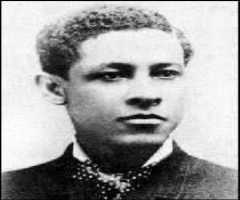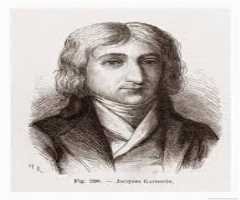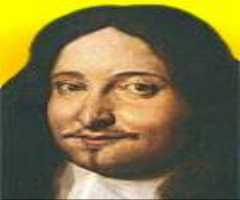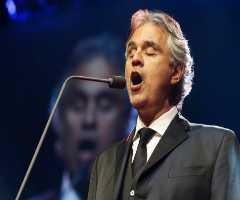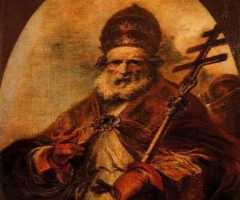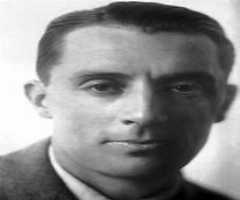Guglielmo Marconi Biography, Life, Interesting Facts

Birthday :
Died On :
Also Known For :
Physicist, Electrical Engineer
Birth Place :
Bologna, Emilia-Romagna Region, Italy
Zodiac Sign :
Guglielmo Marconi was a Nobel Prize winner in Physics and has a law named after him. For someone who was not an excellent student, Guglielmo Marconi excelled in the world of science, particularly radio.
Childhood And Early Life
Guglielmo Marconi was born on April 25, 1874, in Bologna, Italy. His father was a wealthy Italian gentleman while his mother came from a family of Irish Distillers. Guglielmo Marconi was always interested in physical science and trying to figure out how things worked.
Guglielmo Marconi had his laboratory on his father's estates where he was able to conduct experiments.
Education
Guglielmo Marconi attended private schools in Bologna, Florence, and Leghorn. When Guglielmo Marconi was older, Guglielmo Marconi studied at the Livorno Technical Institute.
Career
In 1895 at the age of 21, Guglielmo Marconi invented the machine that used wireless telegraphy to send signals over a mile away. Guglielmo Marconi took the device to England. With further development and financial supporters, Guglielmo Marconi was able to extend that distance to almost twelve miles away.
In 1896, Guglielmo Marconi got the first patent for the first type of invention of this kind. It allowed him to establish his first company, the “Wireless Telegraph and Signal Company.” Three years later it was renamed “Marconi's Wireless Telegraph Company.”
The invention of the wireless telegraph allowed for faster transmission of the message. As the years progressed, Guglielmo Marconi continued working on the long-range distance of communication. France and England established wireless communication in 1899. The machine also proved to be portable. Military ships could transmit messages within 75 miles of each other. Two American ships were able to use his machine to report America's Cup yacht race in 1899 while the race was in progress.
In 1900, Guglielmo Marconi proved that the Earth's curvature did not have any adverse effect on wireless signals. Guglielmo Marconi did this when he established transatlantic communication between Cornwall, England, and Newfoundland. All of his work in the advancement of wireless communication was recognized in 1909 when Guglielmo Marconi and Karl Braun won the Nobel Prize in Physic for the co-discovery of wireless telegraphy.
Guglielmo Marconi's inventions and adaptations to wireless telegraphy did not end there. Guglielmo Marconi patented the “timed spark” system which allowed messages to be sent and received in a semi-continuous manner.
After his military service, Guglielmo Marconi worked on further technology including shortwave radio, imperial communication, and microwave radio telephone link. With all of his efforts, Guglielmo Marconi was able to improve upon his invention for better communication that was useful and consistent.
Personal Life And Legacy
In 1914 at the beginning of World War I, Guglielmo Marconi was commissioned in the Italian Army. Guglielmo Marconi started as Lieutenant and moved up in ranks to Captain. In 1916, Guglielmo Marconi transferred his service to the Navy with the rank of Commander.
Guglielmo Marconi married Beatrice O'Brien in 1905. Together the couple had a son and two daughters. Their marriage ended in 1927. That same year, he married the Countess Bezzi-Scali. They had one daughter.
Guglielmo Marconi died on July 20, 1937, in Rome, Italy at the age of 63.
Controversies
Guglielmo Marconi has been referred to as the “Father of Radio.” While he had the patent to prove such, other men around the world had their claims to the use of wireless broadcasting or radio waves.
For example, in 1895, Russian scientist Alexander Popov presented a paper on his lightning detector that works on radio waves. Some suggest that it was the first radio receiver. In India at the same time, Sir Jagadish Chandra Bose demonstrated how he could use radio waves to ring a bell among other things.
Awards And Achievements
• Granted the world's first patent for a system of wireless telegraphy, 1896
• Grand Cross of the Order of the Crown of Italy, 1902
• Chevalier of the Civil Order of Savoy, 1905
• Nobel Prize in Physics (along with Karl Braun), 1909
• Honorary Knight Grand Cross of the Royal Victorian Order, 1914
• Silver Medal of the International Mark Twain Society, 1927
• John Scott Legacy Medal and Premium, 1932
• Goethe Medal for Art and Science, 1932
• Lord Kelvin Medal of the Institute of Civil Engineers, 1932
• Numerous honorary doctorates from some universities
Hobbies
Marconi enjoyed tinkering with machines in his science experiments. When he was not working, he enjoyed hunting, cycling, and
Summary Of Major Works
• Invented system of wireless telegraphy, 1896
• Founded The Wireless Telegraph & Signal Company, 1897
• Won Nobel Prize in Physics with Karl Braun, 1909
• Continued the development of wireless communication
More Inventors
More People From Emilia-Romagna Region
More People From Italy
-
![Andrea Bocelli]()
Andrea Bocelli
-
![Evangelista Torricelli]()
Evangelista Torricelli
-
![St. Frances Xavier Cabrini]()
St. Frances Xavier Cabrini
-
![St Leo I]()
St Leo I
-
![Antonio Gramsci]()
Antonio Gramsci
-
![Gillo Pontecorvo]()
Gillo Pontecorvo
